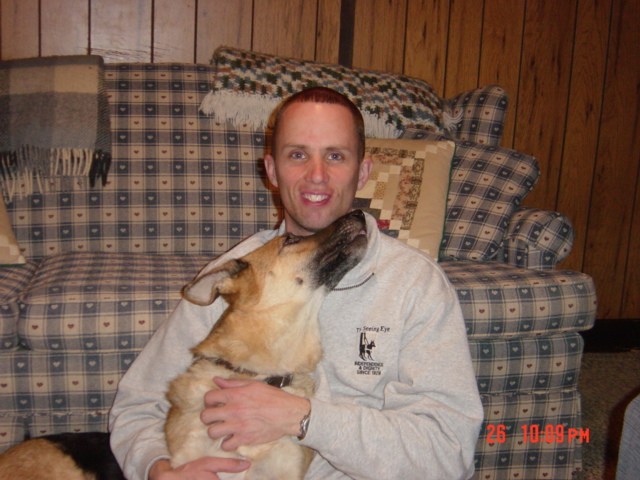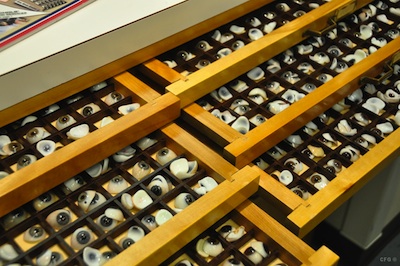My old favorites: an update
March 8, 2012 • 6 Comments • Posted in blindness, Mike Knezovich, Seeing Eye dogs, UncategorizedHere’s guest blogger Mike Knezovich with a status report on some old friends:
So, in case there was any doubt, Whitney’s definitely my new favorite. Though she has brain cramps (children and certain other dogs make her forget herself momentarily), she’s game for the city buzz, she responds to Beth’s corrections, and she will play — infinitely — catch and fetch for as long as a human can. Gotta’ watch her teeth, though — she’s actually shredded a couple Kong toys and even destroyed a Lacrosse ball.
Meanwhile, my old favorites are thriving. Hanni, the eternal star, enjoys a rich life in Urbana with Nancy and Steven. She’s slowed down, for sure — she doesn’t always leap up to greet you every time you enter the room. But she still thumps her tail on the floor at the first hint that you might give her a pet, a scratch, or even just a look. And at 12 years old, she still gets around. Nancy and Steven regularly take her for long walks at Urbana’s Meadowbrook Park or at Homer Lake, which is a forest preserve just outside town.
On one such walk, Hanni showed she’s still got spunk, too. Nancy reports that on a recent walk, a couple dogs got off leash and started a mad dash
toward her and Hanni. Hanni is typically the most submissive dog I’ve ever seen. If even a tiny dog approaches, she rolls on her back and goes into the “how low can you go” routine to signal her un-aggressive intentions. Which is what she did as the dogs approached, according to Nancy. This time, though, when one of the approaching dogs bared its teeth, Hanni sprung to her feet and let out an authoritative WOOF that sent the would-be bullies packing in the other direction. I always knew she had it in her, and am happy she never really had to use it.
And then there’s Harper, the retired gentle hero. We still miss him, his giant head, his soft ears, and his generally sweet and peaceful disposition. Well, mostly peaceful, it seems. Chris and Larry, who took Harper in when it was clear he couldn’t work any more, have patiently helped him build his confidence and nerve. You may recall that after his and Beth’s traffic near-miss, he refused to venture more than a block or so from our apartment. He was the same in the suburbs, too. But gradually, walking backward while coaxing him to keep walking, Chris and Larry have gotten Harper to walk all the way around the block — and beyond! He regularly plays with the Collie across the street, and he’s even gotten cocky enough to…chase a squirrel into the neighbor’s yard and tree it.
OK, OK, we don’t want him terrorizing squirrels. But my heart swells at the thought that Harper is shaking off the trauma that used to freeze him in his tracks. And I’ll admit it — I’m kinda’ proud of the guy.
And grateful to our friends Steven and Nancy and Chris and Larry and before them Randy Cox — who took in Pandora (who lived to 17), Beth’s first guide dog. All-time favorites, all of them.






